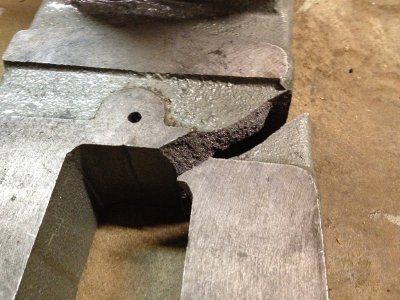- Joined
- Jun 8, 2014
- Messages
- 99
A friend bought a broken arbor press at an auction and I volunteered to attempt to repair it for him. Surfing the web a bit reveals several methods for joining cast iron: stick welding with Ni rods ($$$), brazing, and TIG welding with silicon bronze filler being the most common. I don't have TIG but do have stick, MIG and oxy-acetylene. I found silicon bronze MIG wire and am tempted to try that since I have the most experience with MIG but
I didn't find any reports of how well it works.
What recommendations, tips, & advice can those more experienced than I offer?
I didn't find any reports of how well it works.

What recommendations, tips, & advice can those more experienced than I offer?

